Here& #39;s an #AntiquityThread on the findings (
This site is located on Common Moor, 1km from Glastonbury town (or 10 km from the festival). At the time of occupation, this was a swamp with patches of open water located on the edge of wet woodland. 2/
 https://abs.twimg.com/emoji/v2/... draggable="false" alt="📷" title="Kamera" aria-label="Emoji: Kamera">: Recreation of Iron Age inhabitants deciding to settle at Glastobury.
https://abs.twimg.com/emoji/v2/... draggable="false" alt="📷" title="Kamera" aria-label="Emoji: Kamera">: Recreation of Iron Age inhabitants deciding to settle at Glastobury.
The Iron Age inhabitants built foundations out of layers of wood, peat, stone and more, secured by timber palisades to create a crannog, or artificial island. 3/
 https://abs.twimg.com/emoji/v2/... draggable="false" alt="📷" title="Kamera" aria-label="Emoji: Kamera">: Reconstruction of the site by Amédée Forestier (1911)
https://abs.twimg.com/emoji/v2/... draggable="false" alt="📷" title="Kamera" aria-label="Emoji: Kamera">: Reconstruction of the site by Amédée Forestier (1911)
On this they built their settlement. Many of these buildings survive as 90 mounds, representing 40 roundhouses and associated structures and unenclosed working areas. 4/
 https://abs.twimg.com/emoji/v2/... draggable="false" alt="📷" title="Kamera" aria-label="Emoji: Kamera">: Map of the site
https://abs.twimg.com/emoji/v2/... draggable="false" alt="📷" title="Kamera" aria-label="Emoji: Kamera">: Map of the site
This was discovered by Arthur Bulleid in 1892, resulting in the excavation of much of the settlement and its enclosing palisade was between 1892 and 1907. 5/
 https://abs.twimg.com/emoji/v2/... draggable="false" alt="📷" title="Kamera" aria-label="Emoji: Kamera">: Photo from the original excavations.
https://abs.twimg.com/emoji/v2/... draggable="false" alt="📷" title="Kamera" aria-label="Emoji: Kamera">: Photo from the original excavations.
Whilst these finds made key contributions to our understanding of Iron Age Britain, it was ultimately decided to rebury many timbers found at the site to preserve them. 6/
 https://abs.twimg.com/emoji/v2/... draggable="false" alt="📷" title="Kamera" aria-label="Emoji: Kamera">: Bowl found at the site, by Rodw / CC BY-SA 4.0,
https://abs.twimg.com/emoji/v2/... draggable="false" alt="📷" title="Kamera" aria-label="Emoji: Kamera">: Bowl found at the site, by Rodw / CC BY-SA 4.0,
This worked great and now archaeologists have returned to the site to uncover this wood, allowing them to use radiocarbon and tree ring dating to get a more complete picture of the site& #39;s history. 7/
 https://abs.twimg.com/emoji/v2/... draggable="false" alt="📷" title="Kamera" aria-label="Emoji: Kamera">: Archaeologists re-excavating timbers at the site.
https://abs.twimg.com/emoji/v2/... draggable="false" alt="📷" title="Kamera" aria-label="Emoji: Kamera">: Archaeologists re-excavating timbers at the site.
This robust chronology indicates that the settlement was probably established between 185–155 BC. The final construction events took about a hundred years later, between 80–20 BC. 8/
 https://abs.twimg.com/emoji/v2/... draggable="false" alt="📷" title="Kamera" aria-label="Emoji: Kamera">: Estimate of house number during the occupation of Glastonbury.
https://abs.twimg.com/emoji/v2/... draggable="false" alt="📷" title="Kamera" aria-label="Emoji: Kamera">: Estimate of house number during the occupation of Glastonbury.
The researchers note such a short occupation may not be unusual. Early Mesa Verde villages were termed ‘social tinderboxes’, for example, as they rarely endured beyond 1-3 generations. 9/
The chronology also suggests that only ~12 of the houses were occupied at any one time. These would have be regularly replaced as they sank into the foundations or degraded over time. 10/
 https://abs.twimg.com/emoji/v2/... draggable="false" alt="📷" title="Kamera" aria-label="Emoji: Kamera">: Reconstruction of a Glastonbury-like roundhouse by Martin Bodman / CC BY-SA 2.0
https://abs.twimg.com/emoji/v2/... draggable="false" alt="📷" title="Kamera" aria-label="Emoji: Kamera">: Reconstruction of a Glastonbury-like roundhouse by Martin Bodman / CC BY-SA 2.0
As such, this research can tell us a lot about this important Iron Age site, as well as helping date a wide range of associated material culture, and complements chronologies established for other Iron Age sites. 11/11
You can find out more about this important research  https://abs.twimg.com/emoji/v2/... draggable="false" alt="🆓" title="Quadratisches FREE" aria-label="Emoji: Quadratisches FREE"> in Antiquity
https://abs.twimg.com/emoji/v2/... draggable="false" alt="🆓" title="Quadratisches FREE" aria-label="Emoji: Quadratisches FREE"> in Antiquity  https://abs.twimg.com/emoji/v2/... draggable="false" alt="👇" title="Rückhand Zeigefinger nach unten" aria-label="Emoji: Rückhand Zeigefinger nach unten">
https://abs.twimg.com/emoji/v2/... draggable="false" alt="👇" title="Rückhand Zeigefinger nach unten" aria-label="Emoji: Rückhand Zeigefinger nach unten">
& #39;The chronology of Glastonbury Lake Village& #39; https://doi.org/10.15184/aqy.2020.167">https://doi.org/10.15184/...
& #39;The chronology of Glastonbury Lake Village& #39; https://doi.org/10.15184/aqy.2020.167">https://doi.org/10.15184/...

 Read on Twitter
Read on Twitter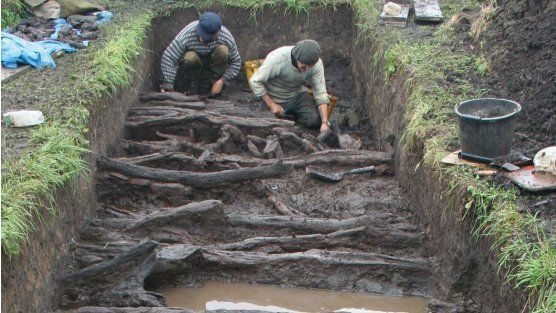 #Archaeology: Glastonbury Lake Village was an Iron Age settlement on an artificial island in Somerset, https://abs.twimg.com/emoji/v2/... draggable="false" alt="🇬🇧" title="Flagge des Vereinigten Königreiches" aria-label="Emoji: Flagge des Vereinigten Königreiches">. Now, a new programme of dating reveals the site was founded ~160 BC and lasted ~100 years.Here& #39;s an #AntiquityThread on the findings (https://abs.twimg.com/emoji/v2/... draggable="false" alt="🆓" title="Quadratisches FREE" aria-label="Emoji: Quadratisches FREE">) https://buff.ly/35Ur10T&q... 1/https://abs.twimg.com/emoji/v2/... draggable="false" alt="🧵" title="Thread" aria-label="Emoji: Thread">" title="https://abs.twimg.com/emoji/v2/... draggable="false" alt="🆕" title="Quadratisches NEW" aria-label="Emoji: Quadratisches NEW"> #Archaeology: Glastonbury Lake Village was an Iron Age settlement on an artificial island in Somerset, https://abs.twimg.com/emoji/v2/... draggable="false" alt="🇬🇧" title="Flagge des Vereinigten Königreiches" aria-label="Emoji: Flagge des Vereinigten Königreiches">. Now, a new programme of dating reveals the site was founded ~160 BC and lasted ~100 years.Here& #39;s an #AntiquityThread on the findings (https://abs.twimg.com/emoji/v2/... draggable="false" alt="🆓" title="Quadratisches FREE" aria-label="Emoji: Quadratisches FREE">) https://buff.ly/35Ur10T&q... 1/https://abs.twimg.com/emoji/v2/... draggable="false" alt="🧵" title="Thread" aria-label="Emoji: Thread">" class="img-responsive" style="max-width:100%;"/>
#Archaeology: Glastonbury Lake Village was an Iron Age settlement on an artificial island in Somerset, https://abs.twimg.com/emoji/v2/... draggable="false" alt="🇬🇧" title="Flagge des Vereinigten Königreiches" aria-label="Emoji: Flagge des Vereinigten Königreiches">. Now, a new programme of dating reveals the site was founded ~160 BC and lasted ~100 years.Here& #39;s an #AntiquityThread on the findings (https://abs.twimg.com/emoji/v2/... draggable="false" alt="🆓" title="Quadratisches FREE" aria-label="Emoji: Quadratisches FREE">) https://buff.ly/35Ur10T&q... 1/https://abs.twimg.com/emoji/v2/... draggable="false" alt="🧵" title="Thread" aria-label="Emoji: Thread">" title="https://abs.twimg.com/emoji/v2/... draggable="false" alt="🆕" title="Quadratisches NEW" aria-label="Emoji: Quadratisches NEW"> #Archaeology: Glastonbury Lake Village was an Iron Age settlement on an artificial island in Somerset, https://abs.twimg.com/emoji/v2/... draggable="false" alt="🇬🇧" title="Flagge des Vereinigten Königreiches" aria-label="Emoji: Flagge des Vereinigten Königreiches">. Now, a new programme of dating reveals the site was founded ~160 BC and lasted ~100 years.Here& #39;s an #AntiquityThread on the findings (https://abs.twimg.com/emoji/v2/... draggable="false" alt="🆓" title="Quadratisches FREE" aria-label="Emoji: Quadratisches FREE">) https://buff.ly/35Ur10T&q... 1/https://abs.twimg.com/emoji/v2/... draggable="false" alt="🧵" title="Thread" aria-label="Emoji: Thread">" class="img-responsive" style="max-width:100%;"/>
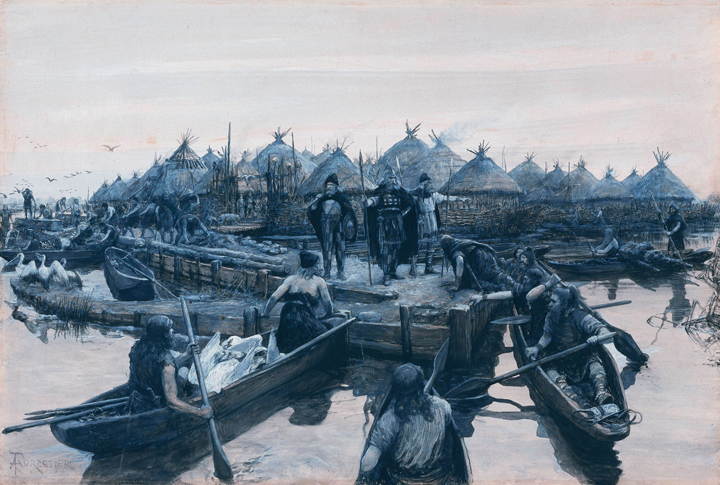 : Reconstruction of the site by Amédée Forestier (1911)" title="The Iron Age inhabitants built foundations out of layers of wood, peat, stone and more, secured by timber palisades to create a crannog, or artificial island. 3/https://abs.twimg.com/emoji/v2/... draggable="false" alt="📷" title="Kamera" aria-label="Emoji: Kamera">: Reconstruction of the site by Amédée Forestier (1911)" class="img-responsive" style="max-width:100%;"/>
: Reconstruction of the site by Amédée Forestier (1911)" title="The Iron Age inhabitants built foundations out of layers of wood, peat, stone and more, secured by timber palisades to create a crannog, or artificial island. 3/https://abs.twimg.com/emoji/v2/... draggable="false" alt="📷" title="Kamera" aria-label="Emoji: Kamera">: Reconstruction of the site by Amédée Forestier (1911)" class="img-responsive" style="max-width:100%;"/>
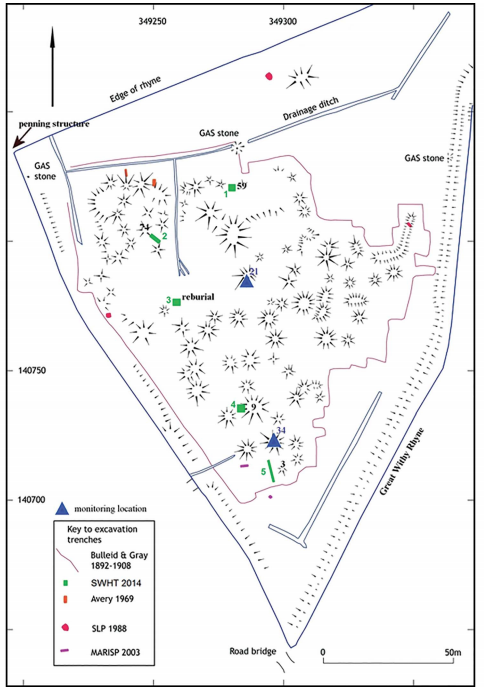 : Map of the site" title="On this they built their settlement. Many of these buildings survive as 90 mounds, representing 40 roundhouses and associated structures and unenclosed working areas. 4/https://abs.twimg.com/emoji/v2/... draggable="false" alt="📷" title="Kamera" aria-label="Emoji: Kamera">: Map of the site" class="img-responsive" style="max-width:100%;"/>
: Map of the site" title="On this they built their settlement. Many of these buildings survive as 90 mounds, representing 40 roundhouses and associated structures and unenclosed working areas. 4/https://abs.twimg.com/emoji/v2/... draggable="false" alt="📷" title="Kamera" aria-label="Emoji: Kamera">: Map of the site" class="img-responsive" style="max-width:100%;"/>
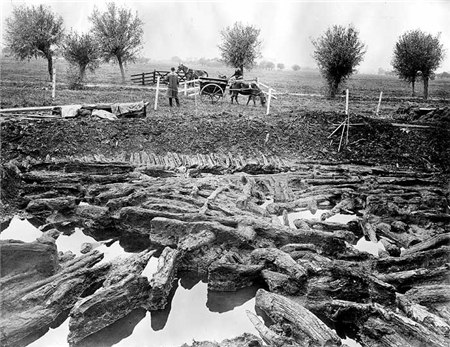 : Photo from the original excavations." title="This was discovered by Arthur Bulleid in 1892, resulting in the excavation of much of the settlement and its enclosing palisade was between 1892 and 1907. 5/https://abs.twimg.com/emoji/v2/... draggable="false" alt="📷" title="Kamera" aria-label="Emoji: Kamera">: Photo from the original excavations." class="img-responsive" style="max-width:100%;"/>
: Photo from the original excavations." title="This was discovered by Arthur Bulleid in 1892, resulting in the excavation of much of the settlement and its enclosing palisade was between 1892 and 1907. 5/https://abs.twimg.com/emoji/v2/... draggable="false" alt="📷" title="Kamera" aria-label="Emoji: Kamera">: Photo from the original excavations." class="img-responsive" style="max-width:100%;"/>
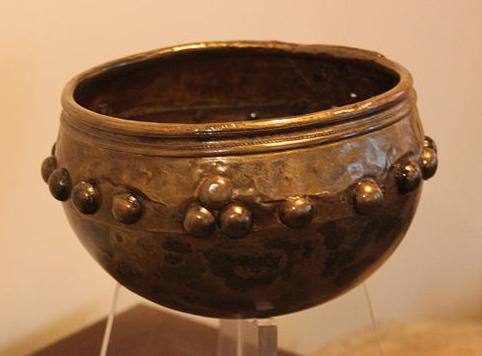 : Bowl found at the site, by Rodw / CC BY-SA 4.0," title="Whilst these finds made key contributions to our understanding of Iron Age Britain, it was ultimately decided to rebury many timbers found at the site to preserve them. 6/https://abs.twimg.com/emoji/v2/... draggable="false" alt="📷" title="Kamera" aria-label="Emoji: Kamera">: Bowl found at the site, by Rodw / CC BY-SA 4.0," class="img-responsive" style="max-width:100%;"/>
: Bowl found at the site, by Rodw / CC BY-SA 4.0," title="Whilst these finds made key contributions to our understanding of Iron Age Britain, it was ultimately decided to rebury many timbers found at the site to preserve them. 6/https://abs.twimg.com/emoji/v2/... draggable="false" alt="📷" title="Kamera" aria-label="Emoji: Kamera">: Bowl found at the site, by Rodw / CC BY-SA 4.0," class="img-responsive" style="max-width:100%;"/>
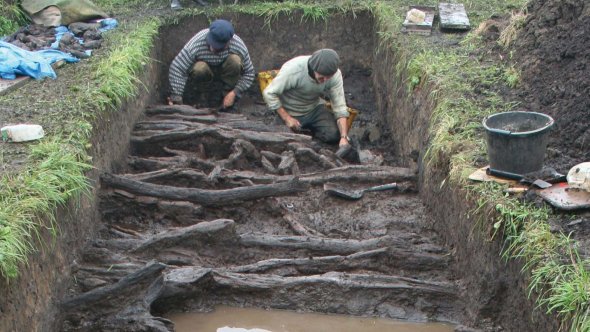 : Archaeologists re-excavating timbers at the site." title="This worked great and now archaeologists have returned to the site to uncover this wood, allowing them to use radiocarbon and tree ring dating to get a more complete picture of the site& #39;s history. 7/https://abs.twimg.com/emoji/v2/... draggable="false" alt="📷" title="Kamera" aria-label="Emoji: Kamera">: Archaeologists re-excavating timbers at the site." class="img-responsive" style="max-width:100%;"/>
: Archaeologists re-excavating timbers at the site." title="This worked great and now archaeologists have returned to the site to uncover this wood, allowing them to use radiocarbon and tree ring dating to get a more complete picture of the site& #39;s history. 7/https://abs.twimg.com/emoji/v2/... draggable="false" alt="📷" title="Kamera" aria-label="Emoji: Kamera">: Archaeologists re-excavating timbers at the site." class="img-responsive" style="max-width:100%;"/>
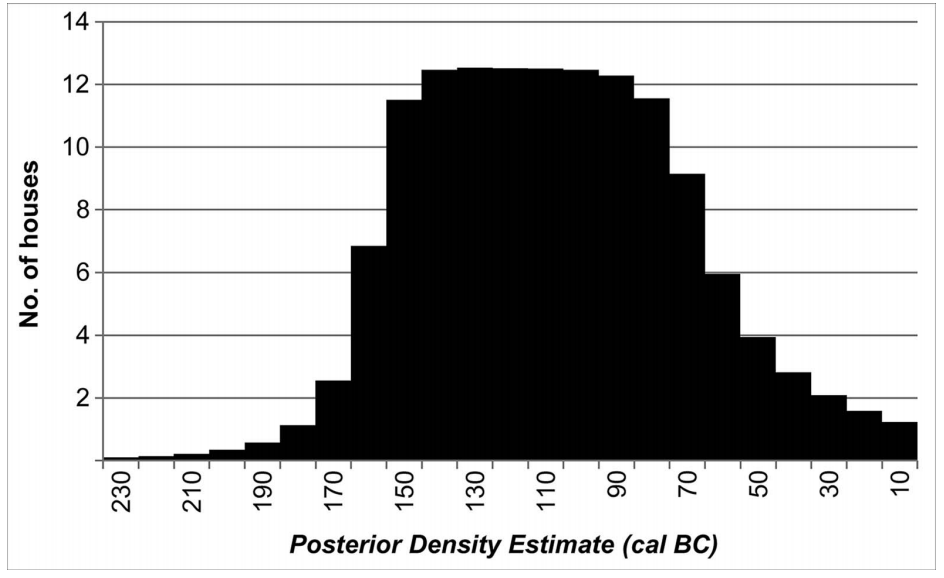 : Estimate of house number during the occupation of Glastonbury." title="This robust chronology indicates that the settlement was probably established between 185–155 BC. The final construction events took about a hundred years later, between 80–20 BC. 8/https://abs.twimg.com/emoji/v2/... draggable="false" alt="📷" title="Kamera" aria-label="Emoji: Kamera">: Estimate of house number during the occupation of Glastonbury." class="img-responsive" style="max-width:100%;"/>
: Estimate of house number during the occupation of Glastonbury." title="This robust chronology indicates that the settlement was probably established between 185–155 BC. The final construction events took about a hundred years later, between 80–20 BC. 8/https://abs.twimg.com/emoji/v2/... draggable="false" alt="📷" title="Kamera" aria-label="Emoji: Kamera">: Estimate of house number during the occupation of Glastonbury." class="img-responsive" style="max-width:100%;"/>
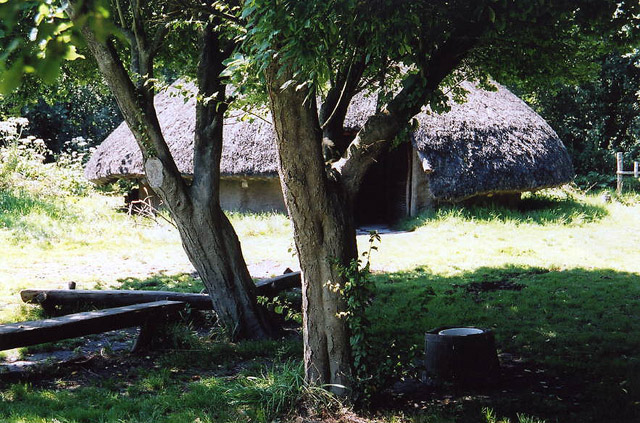 : Reconstruction of a Glastonbury-like roundhouse by Martin Bodman / CC BY-SA 2.0" title="The chronology also suggests that only ~12 of the houses were occupied at any one time. These would have be regularly replaced as they sank into the foundations or degraded over time. 10/https://abs.twimg.com/emoji/v2/... draggable="false" alt="📷" title="Kamera" aria-label="Emoji: Kamera">: Reconstruction of a Glastonbury-like roundhouse by Martin Bodman / CC BY-SA 2.0" class="img-responsive" style="max-width:100%;"/>
: Reconstruction of a Glastonbury-like roundhouse by Martin Bodman / CC BY-SA 2.0" title="The chronology also suggests that only ~12 of the houses were occupied at any one time. These would have be regularly replaced as they sank into the foundations or degraded over time. 10/https://abs.twimg.com/emoji/v2/... draggable="false" alt="📷" title="Kamera" aria-label="Emoji: Kamera">: Reconstruction of a Glastonbury-like roundhouse by Martin Bodman / CC BY-SA 2.0" class="img-responsive" style="max-width:100%;"/>
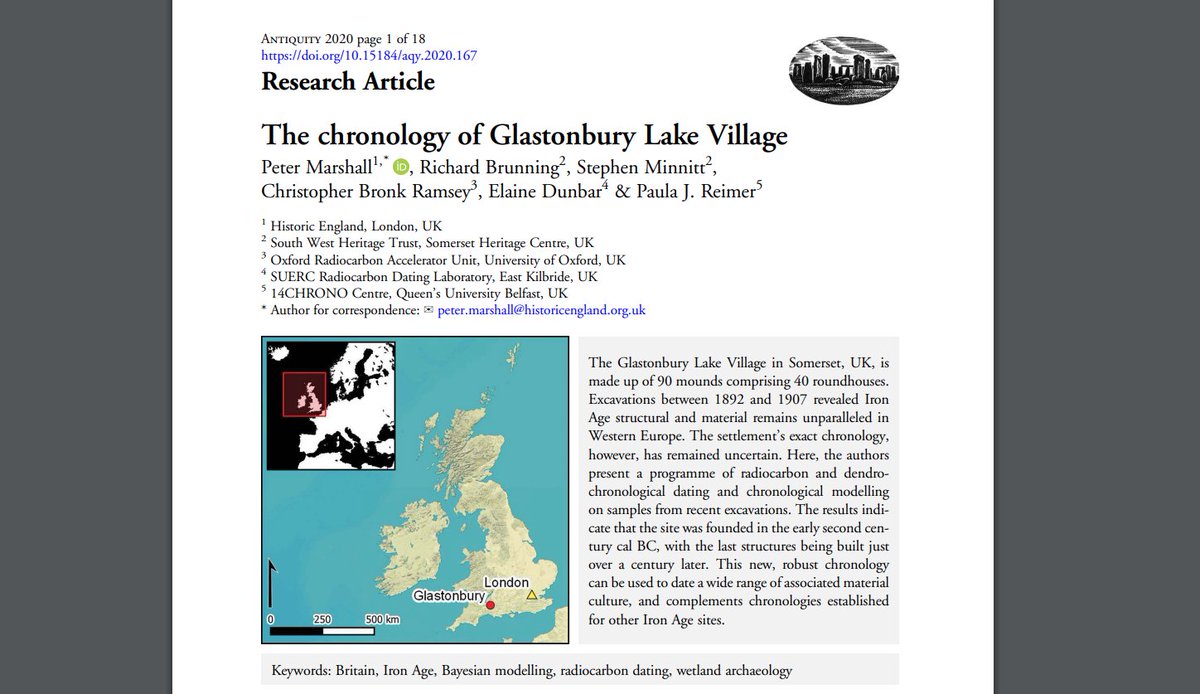 in Antiquity https://abs.twimg.com/emoji/v2/... draggable="false" alt="👇" title="Rückhand Zeigefinger nach unten" aria-label="Emoji: Rückhand Zeigefinger nach unten">& #39;The chronology of Glastonbury Lake Village& #39; https://doi.org/10.15184/..." title="You can find out more about this important research https://abs.twimg.com/emoji/v2/... draggable="false" alt="🆓" title="Quadratisches FREE" aria-label="Emoji: Quadratisches FREE"> in Antiquity https://abs.twimg.com/emoji/v2/... draggable="false" alt="👇" title="Rückhand Zeigefinger nach unten" aria-label="Emoji: Rückhand Zeigefinger nach unten">& #39;The chronology of Glastonbury Lake Village& #39; https://doi.org/10.15184/..." class="img-responsive" style="max-width:100%;"/>
in Antiquity https://abs.twimg.com/emoji/v2/... draggable="false" alt="👇" title="Rückhand Zeigefinger nach unten" aria-label="Emoji: Rückhand Zeigefinger nach unten">& #39;The chronology of Glastonbury Lake Village& #39; https://doi.org/10.15184/..." title="You can find out more about this important research https://abs.twimg.com/emoji/v2/... draggable="false" alt="🆓" title="Quadratisches FREE" aria-label="Emoji: Quadratisches FREE"> in Antiquity https://abs.twimg.com/emoji/v2/... draggable="false" alt="👇" title="Rückhand Zeigefinger nach unten" aria-label="Emoji: Rückhand Zeigefinger nach unten">& #39;The chronology of Glastonbury Lake Village& #39; https://doi.org/10.15184/..." class="img-responsive" style="max-width:100%;"/>


